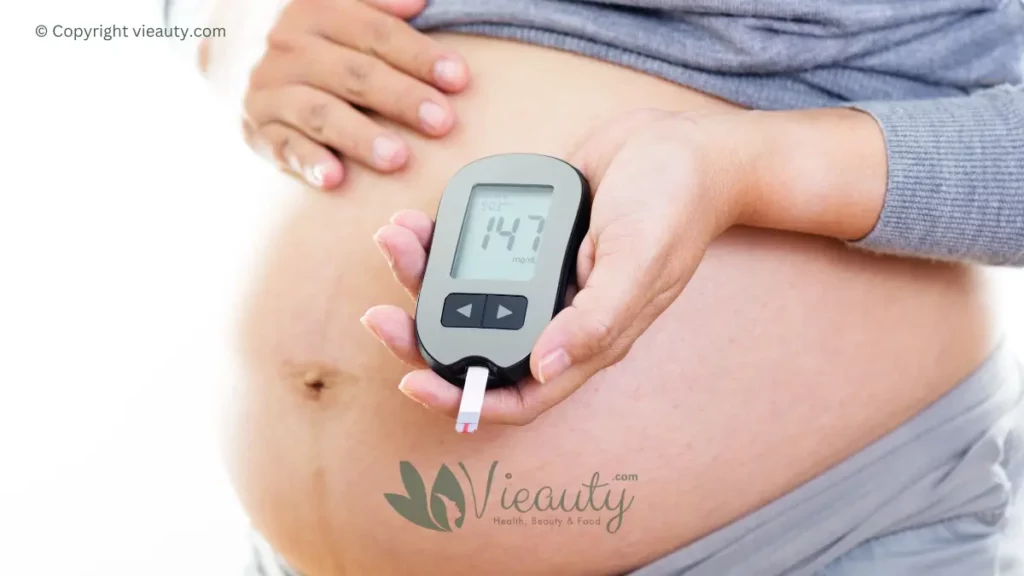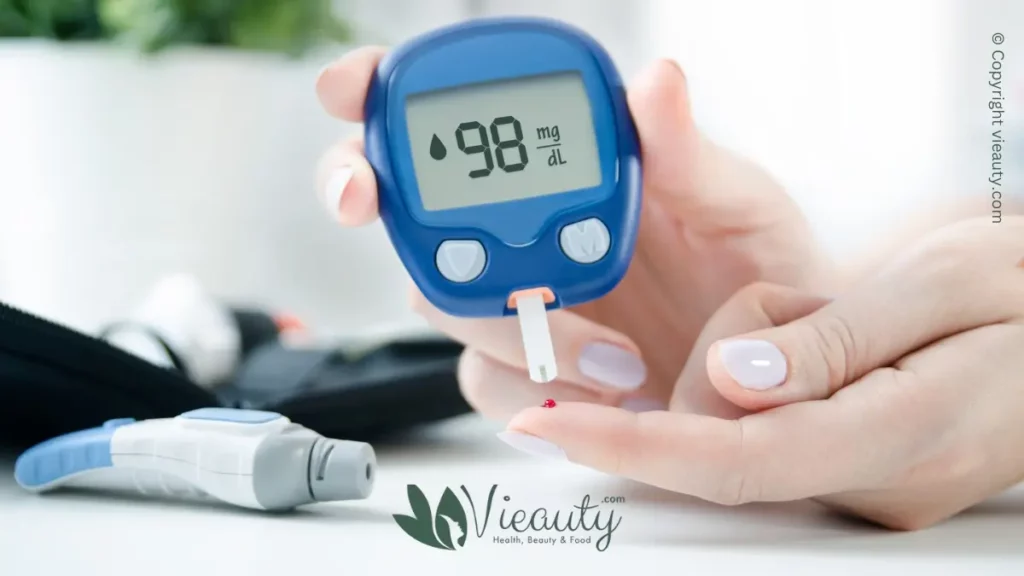A Comprehensive Guide to Understanding the Types of Diabetes
We will explore the causes, symptoms, and treatments of each type to help you better understand this chronic disease and how to manage it. By the end of this guide, you will have a better understanding of the types of diabetes and be better equipped to manage it or support a loved one who has been diagnosed with the condition.
Millions of individuals across the globe are impacted by diabetes, which is a long-lasting condition. It is a condition where the body cannot regulate blood sugar levels properly, leading to high blood sugar levels. The symptoms of diabetes can be mild or severe, and it can lead to serious complications such as blindness, kidney failure, and heart disease.
There are different types of diabetes, and it is important to understand each type to manage the condition effectively. In this comprehensive guide, we will take a closer look at the different types of diabetes, including type 1, type 2, and gestational diabetes.
1. What is diabetes?
Diabetes is a chronic medical condition that affects how your body metabolizes glucose, a type of sugar, which is the source of energy for your body. The food we eat is broken down into glucose, which is then transported by the bloodstream to the cells in our body. Insulin, a hormone produced by the pancreas, is responsible for helping glucose get into the cells to be used as energy.

In people with diabetes, the body either doesn’t produce enough insulin or doesn’t use it effectively. As a result, glucose stays in the bloodstream, causing high blood sugar levels. Over time, high blood sugar levels can damage various organs in the body, including the eyes, kidneys, nerves, and heart.
There are different types of diabetes, including type 1, type 2, gestational diabetes, and other less common types. It’s important to understand the differences between these types, as the management and treatment of each type can vary significantly. Diabetes is a serious medical condition, but with the right treatment and management, people with diabetes can live healthy, active lives.
2. Understanding the biology of diabetes
Diabetes is a health ailment that impacts the manner in which your body manages blood sugar or glucose.
Glucose is an essential source of energy for your body, and insulin, a hormone produced by your pancreas, helps your body utilize glucose effectively. However, in people with diabetes, their bodies either don’t produce enough insulin or can’t use insulin effectively.
There are three main types of diabetes: Type 1, Type 2, and Gestational Diabetes. Type 1 diabetes is a condition in which the immune system mistakenly targets and eliminates insulin-generating cells located within the pancreas as if they were threatening pathogens.
Type 2 diabetes is a condition where the body becomes resistant to insulin, and the pancreas can’t produce enough insulin to meet the body’s needs. Gestational diabetes occurs during pregnancy and usually goes away after delivery, but women who have had gestational diabetes are at higher risk for developing Type 2 diabetes later in life.
In addition to these three main types of diabetes, there are also other rarer types such as Monogenic Diabetes, which is caused by a single gene mutation, and Cystic Fibrosis-Related Diabetes, which is caused by damage to the pancreas due to cystic fibrosis.
Understanding the biology of diabetes is crucial in managing and treating the disease. Monitoring blood sugar levels, taking medications as prescribed, and adopting a healthier lifestyle can all help to manage diabetes effectively. With proper care and management, people with diabetes can live healthy and fulfilling lives.
3. Types of diabetes: type 1, type 2, and gestational diabetes
When it comes to understanding diabetes, it’s important to know that there are different types. Type 1 diabetes is a condition characterized by an autoimmune response wherein the immune system targets and eliminates the insulin-producing cells in the pancreas.
This type of diabetes is usually diagnosed in childhood or adolescence, although it can occur in adults as well. Individuals suffering from type 1 diabetes necessitate either insulin injections or an insulin pump to manage their glucose levels.
Type 2 diabetes is the most common form of diabetes, accounting for 90-95% of cases. It occurs when the body becomes resistant to insulin or when the pancreas doesn’t produce enough insulin. Type 2 diabetes is often associated with obesity, lack of physical activity, and poor diet. It can be managed with lifestyle changes, such as a healthy diet and exercise, as well as medication if necessary.
Gestational diabetes refers to diabetes that arises during pregnancy. Although it often resolves after childbirth, women who experience gestational diabetes face an increased likelihood of developing type 2 diabetes in the future.

Gestational diabetes can increase the risk of complications during pregnancy and delivery, so it’s important to manage blood sugar levels during pregnancy.
Understanding the different types of diabetes is crucial in managing the condition effectively. If you have any concerns about your risk for developing diabetes, or if you have been diagnosed with diabetes, it’s important to work closely with your healthcare provider to develop a plan for managing your blood sugar levels and overall health.
4. The Symptoms of Diabetes
The signs of diabetes can differ based on the specific type of diabetes a person is afflicted with. Some common symptoms of diabetes include frequent urination, excessive thirst, hunger, fatigue, blurry vision, slow healing of wounds, and sudden weight loss.
In some cases, people with diabetes may experience tingling or numbness in their hands or feet, recurring infections, or dark patches of skin. However, it is important to note that some people with type 2 diabetes may not experience any symptoms at all, which is why it is recommended to have regular check-ups with your doctor to monitor your blood sugar levels.
If you experience any of these symptoms, it is important to seek medical attention as soon as possible, as early diagnosis and treatment can help prevent complications associated with diabetes. Keep in mind that symptoms may vary from person to person, and some people may experience symptoms that are not listed here. Therefore, it is important to talk to your doctor if you have any concerns about your health.
5. Diagnosis and testing for diabetes
Diagnosing diabetes is a crucial step in managing the disease. It’s important to note that not everyone with diabetes will experience symptoms, so it’s important to regularly get tested if you’re at high risk. A fasting plasma glucose test (FPG) is the most common way to diagnose diabetes. This test measures your blood glucose level after you’ve fasted for at least 8 hours. If your FPG level is 126 mg/dL or higher, you may have diabetes.

Another test commonly used to diagnose diabetes is the Hemoglobin A1C test (HbA1C). This test measures your average blood glucose level over the past 2-3 months. If your HbA1C level is 6.5% or higher, you may have diabetes.
Additionally, a random glucose test can be done at any time of day without fasting. If your blood glucose level is 200 mg/dL or higher and you’re experiencing symptoms of diabetes, your doctor may diagnose you with diabetes.
It’s important to note that if you’re diagnosed with diabetes, your doctor may recommend further tests to determine the type of diabetes you have. Type 1 diabetes is usually diagnosed in children and young adults and is caused by the body’s immune system attacking the pancreas.
Type 2 diabetes is the most common form of diabetes and is usually diagnosed in adults. During pregnancy, a form of diabetes known as gestational diabetes may manifest.
Getting diagnosed with diabetes can be overwhelming, but it’s important to remember that with proper management and care, people with diabetes can lead normal, healthy lives.
6. Risk factors for diabetes
There are several risk factors that can increase the likelihood of developing diabetes. The most common risk factors include being overweight or obese, having a family history of diabetes, being physically inactive, having high blood pressure, high cholesterol, or high triglycerides, and being over the age of 45.
People who have a history of gestational diabetes, or who have given birth to a baby weighing more than 9 pounds, are also at an increased risk of developing type 2 diabetes later in life.
In addition to these factors, certain ethnic groups are also more likely to develop diabetes. For example, African Americans, Hispanic/Latino Americans, Native Americans, Asian Americans, and Pacific Islanders are all at an increased risk of developing diabetes.
It’s important to note that having one or more of these risk factors does not necessarily mean that a person will develop diabetes, but it does increase the likelihood. Making lifestyle changes, such as losing weight and increasing physical activity, can help to reduce the risk of developing diabetes.
7. Complications of diabetes
Complications of diabetes can be very serious and even life-threatening. Diabetes can cause damage to various parts of the body, including the eyes, kidneys, nerves, and blood vessels. People with diabetes are also at a higher risk of developing heart disease and stroke.
Diabetes can cause damage to the blood vessels in the eyes, leading to a condition called diabetic retinopathy. This can cause vision loss or blindness if left untreated. Diabetes can also cause damage to the kidneys, leading to a condition called diabetic nephropathy. This can cause kidney failure and the need for dialysis or a kidney transplant.
Nerve damage, or diabetic neuropathy, can cause pain, tingling, and numbness in the hands, feet, and legs. It can also cause problems with digestion, sexual function, and bladder control. Diabetes can also cause damage to the blood vessels, increasing the risk of developing peripheral artery disease, which can lead to leg ulcers and infections that can be difficult to treat.
To prevent these complications, it’s important for people with diabetes to manage their blood sugar levels, blood pressure, and cholesterol levels. They should also quit smoking, exercise regularly, and eat a healthy diet. Regular checkups with healthcare providers can also help detect any complications early on, when they are most treatable.
8. Prevention and management of diabetes
Prevention and management of diabetes is critical, as diabetes is a chronic condition that can lead to serious health complications. While some risk factors such as age and family history cannot be controlled, there are lifestyle changes that can be made to help prevent or manage diabetes.

One of the most important things is to maintain a healthy weight. Obesity is a major risk factor for diabetes, so losing weight through exercise and a healthy diet can significantly reduce your risk of developing diabetes. Eating a balanced diet that is high in fiber and low in saturated fat and sugar is also key in preventing diabetes.
Exercise is also important in preventing and managing diabetes. Physical activity can help control blood sugar levels and improve insulin sensitivity. Aim for at least 30 minutes of moderate exercise, such as brisk walking, most days of the week.
Regular check-ups with a healthcare professional are also important in managing diabetes. Monitoring blood sugar levels, blood pressure, and cholesterol levels can help identify any potential problems early on and prevent complications.
Finally, it’s important to quit smoking if you are a smoker. Smoking increases the risk of developing diabetes, and can also lead to complications in those with diabetes. By making these lifestyle changes and working closely with your healthcare team, you can prevent or manage diabetes and reduce the risk of serious complications.
9. Diet and lifestyle changes for diabetes management
Diet and lifestyle changes are essential components of diabetes management. Healthy eating habits and regular exercise can help to control blood sugar levels, lower the risk of complications, and improve overall health.
The first step in managing diabetes with diet is to understand the concept of the glycemic index (GI). The GI measures how quickly carbohydrates in food are broken down into glucose, which can cause blood sugar levels to rise. Foods with a high GI should be limited, while foods with a low GI should be included in the diet.
A diet rich in whole grains, fruits, vegetables, lean proteins, and healthy fats can help to keep blood sugar levels stable. It’s also important to avoid or limit sugary and processed foods, as well as alcohol.
In addition to diet, regular exercise is important for diabetes management. Physical activity can help to improve insulin sensitivity, which means that the body can use insulin more efficiently to lower blood sugar levels.
Exercise can also help to improve cardiovascular health and lower the risk of complications.
It’s important to work with a healthcare provider or registered dietitian to develop a personalized diet and exercise plan for diabetes management. By making these lifestyle changes, individuals with diabetes can improve their overall health and reduce the risk of complications.
10. Medications and insulin therapy for diabetes treatment
Medications and insulin therapy are critical components of diabetes treatment. The goal of these treatments is to control blood sugar levels and prevent complications associated with diabetes such as heart disease, nerve damage, and kidney damage.
There are several types of medications used to treat diabetes, and the choice of medication depends on the type of diabetes, the severity of the condition, and the patient’s individual needs. Some medications work by increasing insulin production, while others work by making cells more sensitive to insulin.
Insulin therapy is often used in patients with type 1 diabetes, where the body does not produce insulin. It may also be used in patients with type 2 diabetes who are unable to control their blood sugar levels with oral medications alone. Insulin is administered subcutaneously, either through injections or an insulin pump, and the dosage is tailored to the patient’s blood sugar levels and individual needs.
It is important to work closely with your healthcare team to determine the best treatment plan for your diabetes. This may involve a combination of medications, insulin therapy, and lifestyle changes such as diet and exercise. Regular monitoring of blood sugar levels is also important to adjust treatment as needed and prevent complications associated with diabetes.
11. Technology advancements for diabetes care
Technology has come a long way in the care and management of diabetes. There are many different devices and tools available to help individuals manage their diabetes more effectively. These advancements have made it easier for individuals to monitor their blood sugar levels, administer insulin, and even manage their diet and exercise routines.
One of the most significant advancements in diabetes care is the continuous glucose monitoring system (CGM). This device allows individuals to monitor their blood sugar levels in real-time, providing them with immediate feedback on how their body is responding to different foods, activities, and medications. CGMs are especially helpful for individuals with Type 1 diabetes who require frequent insulin injections throughout the day.
Another technological advancement in diabetes care is insulin pumps. These devices are worn on the body and provide a continuous flow of insulin throughout the day. Insulin pumps can be programmed to deliver different amounts of insulin at different times, making it easier for individuals to manage their blood sugar levels and avoid dangerous spikes or drops.
There are also many apps and digital tools available to help individuals with diabetes manage their condition. These tools can help individuals track their blood sugar levels, monitor their diet and exercise routines, and even connect with other individuals living with diabetes for support and advice.
Overall, technology has revolutionized diabetes care, making it easier for individuals to manage their condition and live healthier, more active lives. As technology continues to evolve, we can expect even more advancements in the care and treatment of diabetes.
12. Support and resources for living with diabetes
Living with diabetes can be challenging, but there are many resources and support available to help you manage the condition effectively. One of the best resources is your healthcare team, which may include a primary care physician, an endocrinologist, a diabetes educator, and a registered dietitian.
These healthcare professionals can provide you with personalized care, education, and support to help you manage your blood sugar levels, prevent complications, and improve your overall health and well-being. They can also help you develop a diabetes management plan that fits your unique needs and lifestyle.
In addition to your healthcare team, there are many organizations and support groups that provide resources and information for people living with diabetes. These groups can provide emotional support, practical advice, and information about new treatments and technologies.
You can also find online resources, such as blogs, forums, and social media groups, that provide a community of people who understand what you’re going through and can offer support and advice.
Ultimately, living with diabetes requires a combination of self-care, education, and support. With the right resources and a strong support system, you can successfully manage your diabetes and live a full and healthy life.
13. The future of diabetes research and treatment
The future of diabetes research and treatment is looking bright. Scientists and researchers are making significant strides in understanding the disease better and finding new ways to treat it. One of the most promising areas of research is the development of closed-loop systems or artificial pancreas systems.
These systems are designed to mimic the function of a healthy pancreas by automatically monitoring blood glucose levels and delivering insulin as needed. They are currently in the testing phase and have shown promising results.
Another area of research is the use of stem cells to regenerate beta cells in the pancreas that are destroyed in type 1 diabetes. This could potentially cure the disease, and researchers are making progress in this area.
Additionally, researchers are exploring the use of technology to improve diabetes management. Continuous glucose monitoring devices and insulin pumps are becoming more advanced and user-friendly, making it easier for people with diabetes to manage their condition.
Overall, the future of diabetes research and treatment is exciting, and there is hope for better treatments and even a cure in the future. However, it’s important to continue to manage the disease with the current treatments available and to work with your healthcare team to ensure the best possible outcomes.
14. Conclusion and key takeaways.
In conclusion, understanding the types of diabetes is crucial in managing and treating the condition effectively. Type 1 diabetes is an autoimmune disorder that requires insulin therapy, while type 2 diabetes can often be managed through lifestyle changes and medication. Gestational diabetes requires close monitoring during pregnancy, and prediabetes should be taken seriously as it can lead to type 2 diabetes.
It’s important to note that diabetes is a serious condition and can lead to serious health complications if left untreated or unmanaged. However, with the right treatment plan, lifestyle changes, and support from healthcare professionals, those with diabetes can live healthy and fulfilling lives.
Key takeaways from this guide include the importance of understanding the differences between the types of diabetes, regular monitoring of blood sugar levels, making healthy lifestyle choices, and seeking medical advice and treatment if needed.
By taking these steps, you can better manage your diabetes and prevent or delay any potential complications. Remember, knowledge is power, and the more you understand about diabetes, the better equipped you will be to live a healthy and happy life.
Final Thoughts
We hope you found this guide to be helpful in understanding the different types of diabetes. It’s important to know the differences between Type 1, Type 2, and Gestational diabetes, so you can take the necessary steps to manage your health.
Whether you’re living with diabetes or know someone who is, it’s crucial to have a good understanding of the condition so that you can make informed decisions about your health. Thank you for reading, and we hope this guide has provided you with the information you need to stay healthy and informed about diabetes.
